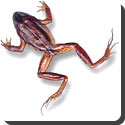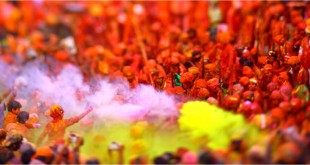 The word amphibia comes from two Greek words: amphi meaning of both kinds and bios meaning life. Amphibia are a class of vertebrate (back-bones) animals that can live both in water and on land. They are descended from fishes that lived more than 300 million years ago.
The word amphibia comes from two Greek words: amphi meaning of both kinds and bios meaning life. Amphibia are a class of vertebrate (back-bones) animals that can live both in water and on land. They are descended from fishes that lived more than 300 million years ago.
The first amphibia to crawl out of the water were heavily built, and slow and clumsy on land, but more active in water. They had long bodies and tails, and some developed into the highly efficient class of reptiles.
About 160 million years ago many amphibia became extinct. But a few survived to develop into the present-day frogs, newts, salamanders and the wormlike caecilians.
Modern amphibia usually have moist, tough skins. They breathe partly through their skins, although they also have lungs. They usually lay their eggs in water. Here the young live, breathing chiefly through gills, until they change into their adult forms.
They eat insects, snails, worms and similar food, and are eaten by fish, snakes and birds. They are usually small. But the Giant Salamander of the Far East is 5 ½ feet long and the Giant Frog of West Africa grows to a mature length of almost one foot.
 Kids Portal For Parents India Kids Network
Kids Portal For Parents India Kids Network






